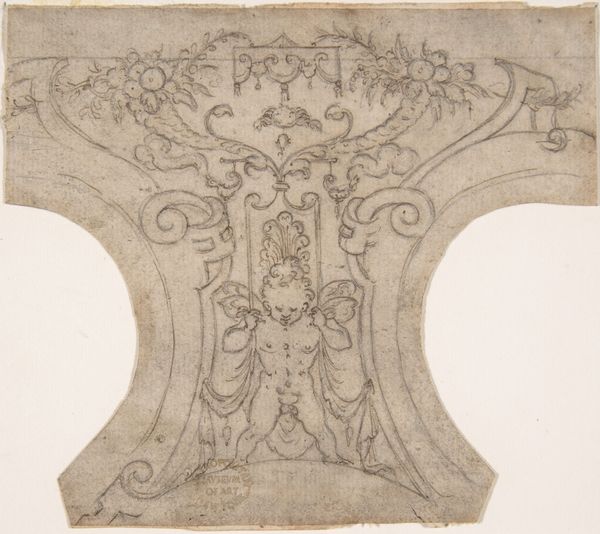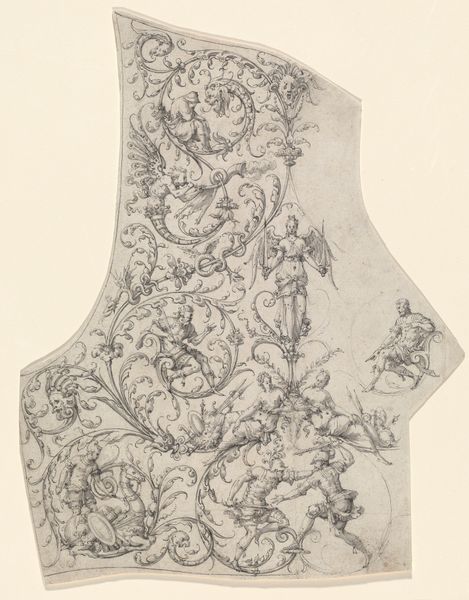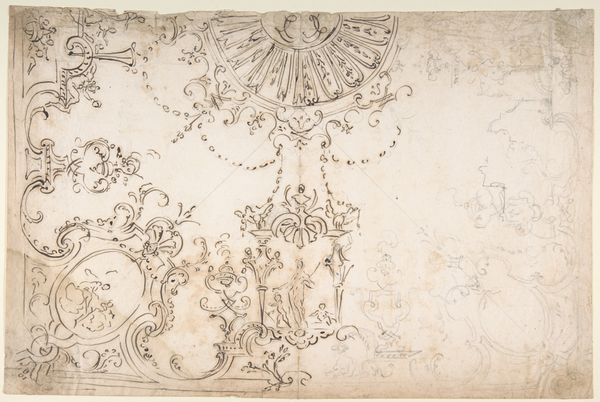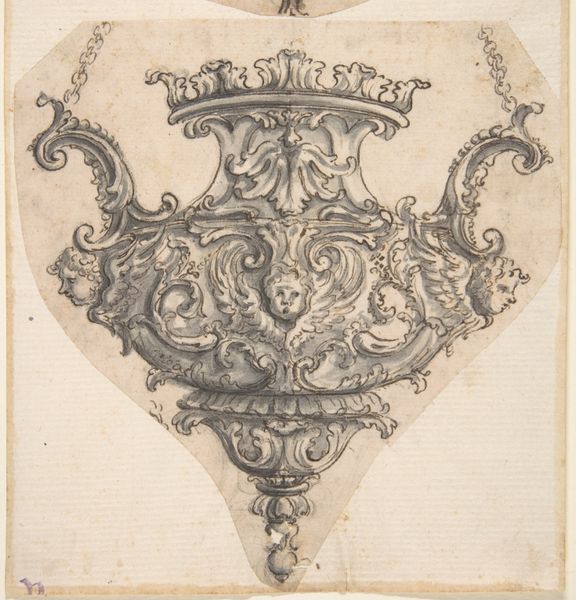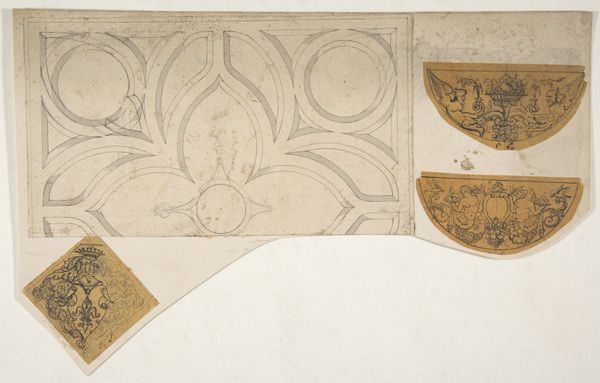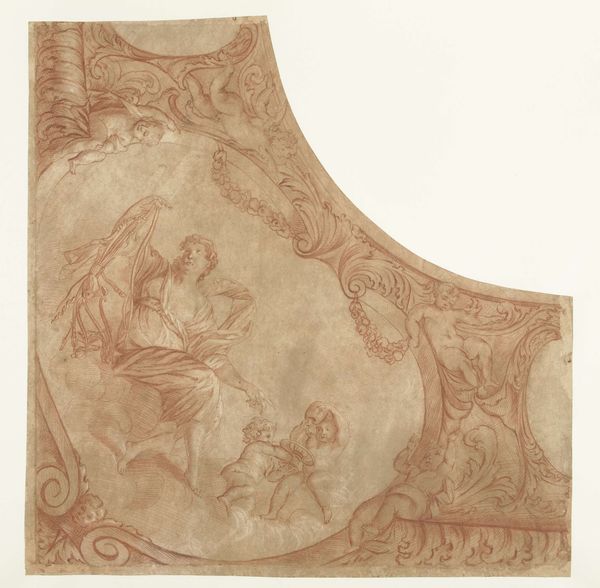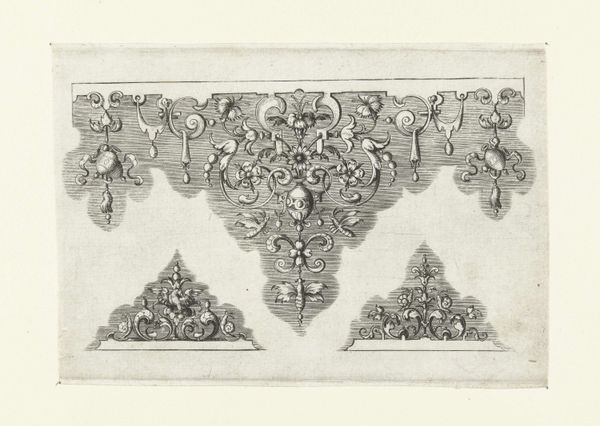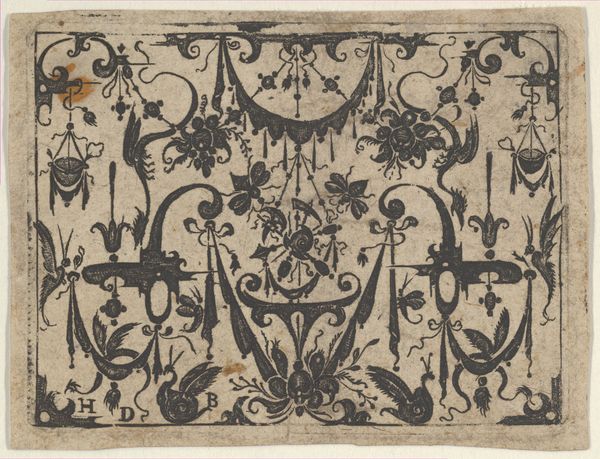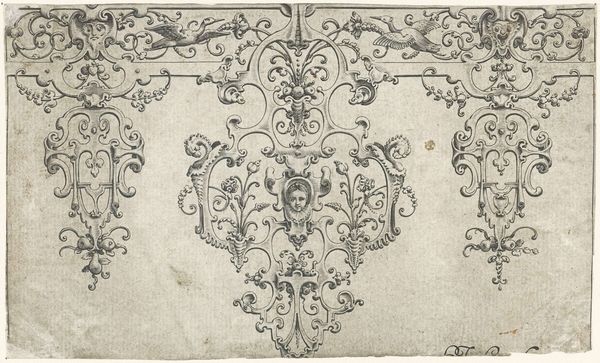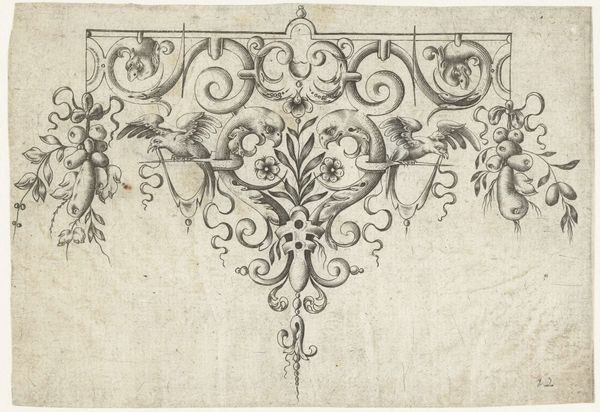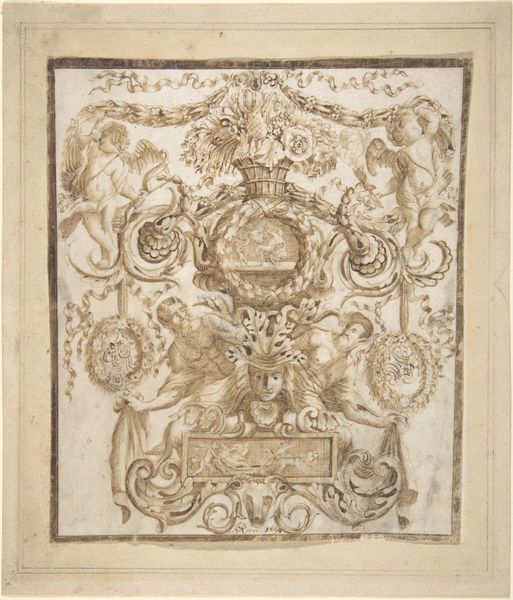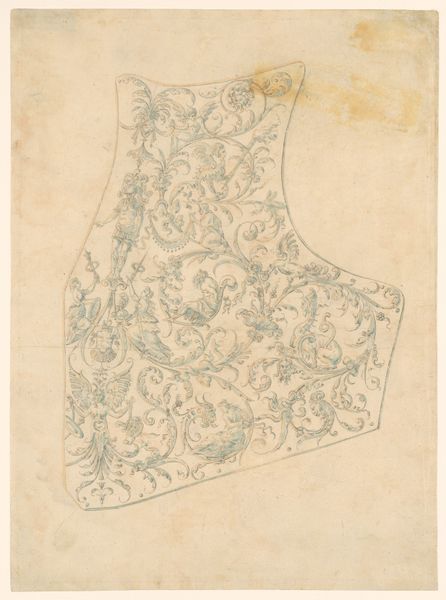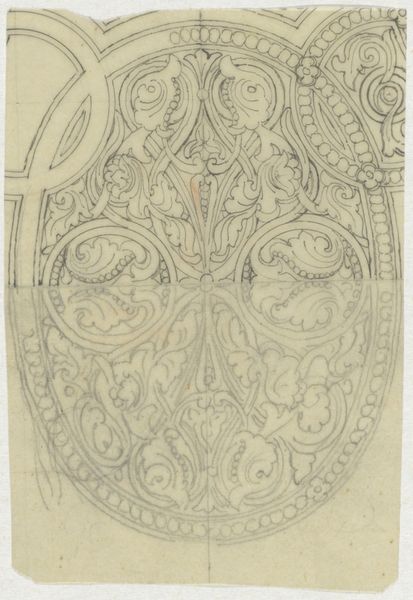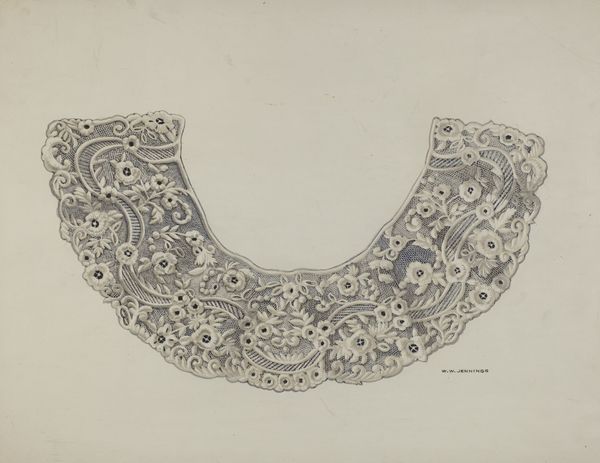
drawing, print, pencil
#
drawing
# print
#
pencil sketch
#
etching
#
figuration
#
11_renaissance
#
pencil
#
history-painting
Dimensions: 3-1/4 x 4-1/2 in. (8.3 x 11.4 cm)
Copyright: Public Domain
Curator: Here we have "Decoration for a Spandrel in a Cove," an anonymous work dating from around 1500 to 1600, rendered in pencil and etching. It resides at the Metropolitan Museum of Art. Editor: My initial impression is of organized chaos. It's intricate, but somehow… unfinished? A blueprint, maybe, rather than a polished piece. Curator: That assessment aligns well with what we know about its potential function. Such spandrel decorations were preliminary designs, possibly for larger architectural projects. The etching would allow the design to be reproduced and potentially transferred to another material for final execution. Think of it as early mass production. Editor: I'm intrigued by the symbolism. We see putti, scrolling foliage, faces—all classic Renaissance motifs. The imagery suggests abundance and perhaps even a playful energy. There’s definitely a visual language being spoken here about wealth and refinement. Curator: Absolutely. The use of the putto, in particular, speaks to the growing influence of humanism during this period. Think about the social and political climate, with merchant families eager to signal their sophistication, investing in lavish building projects and decorative programs. The production of prints allowed them to more widely incorporate classical imagery. Editor: So it's not just art, it’s also a status symbol in the making. The very material and process elevate its meaning. But it’s all sketched. What about the artisans who would later have the task to realize the vision of this page, by using different material and by using specific crafting technics? What about their working condition and level of pay? Did they have a say in this process? Curator: Indeed, these details invite reflections about skill, craft and division of labor during the Renaissance. Also about the social relations that made the crafting production possible. The history is also present in the object. Editor: Seeing it this way really alters my view. From seemingly disparate images now everything makes sense in context. Curator: It’s fascinating how focusing on the material and the processes enriches the layers of interpretation isn't it? Editor: Agreed, this initial sketch opens many questions related to social conditions and imagery influence, things that stay implicit unless carefully excavated.
Comments
No comments
Be the first to comment and join the conversation on the ultimate creative platform.
